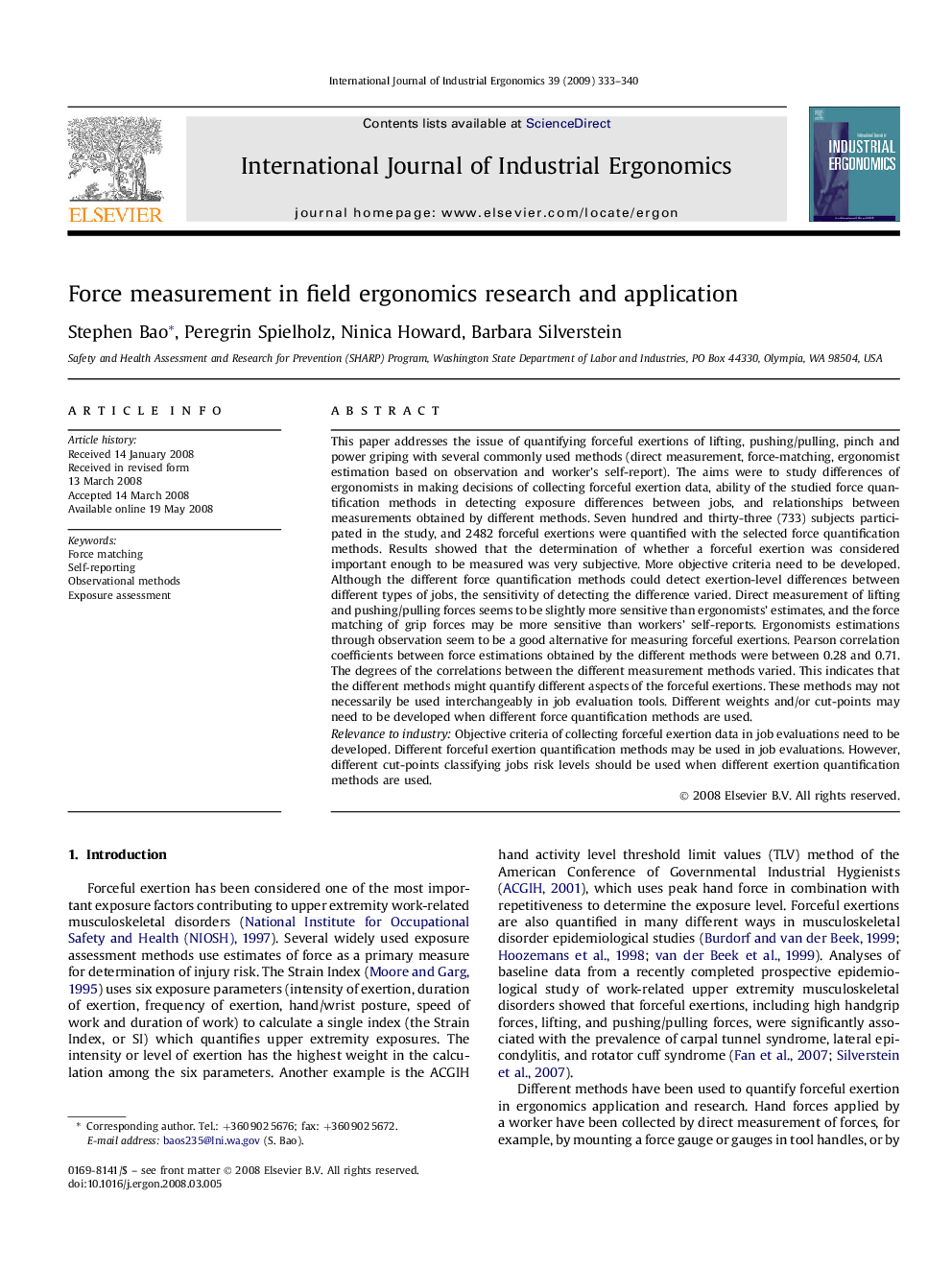| Article ID | Journal | Published Year | Pages | File Type |
|---|---|---|---|---|
| 1096578 | International Journal of Industrial Ergonomics | 2009 | 8 Pages |
This paper addresses the issue of quantifying forceful exertions of lifting, pushing/pulling, pinch and power griping with several commonly used methods (direct measurement, force-matching, ergonomist estimation based on observation and worker's self-report). The aims were to study differences of ergonomists in making decisions of collecting forceful exertion data, ability of the studied force quantification methods in detecting exposure differences between jobs, and relationships between measurements obtained by different methods. Seven hundred and thirty-three (733) subjects participated in the study, and 2482 forceful exertions were quantified with the selected force quantification methods. Results showed that the determination of whether a forceful exertion was considered important enough to be measured was very subjective. More objective criteria need to be developed. Although the different force quantification methods could detect exertion-level differences between different types of jobs, the sensitivity of detecting the difference varied. Direct measurement of lifting and pushing/pulling forces seems to be slightly more sensitive than ergonomists’ estimates, and the force matching of grip forces may be more sensitive than workers’ self-reports. Ergonomists estimations through observation seem to be a good alternative for measuring forceful exertions. Pearson correlation coefficients between force estimations obtained by the different methods were between 0.28 and 0.71. The degrees of the correlations between the different measurement methods varied. This indicates that the different methods might quantify different aspects of the forceful exertions. These methods may not necessarily be used interchangeably in job evaluation tools. Different weights and/or cut-points may need to be developed when different force quantification methods are used.Relevance to industryObjective criteria of collecting forceful exertion data in job evaluations need to be developed. Different forceful exertion quantification methods may be used in job evaluations. However, different cut-points classifying jobs risk levels should be used when different exertion quantification methods are used.
